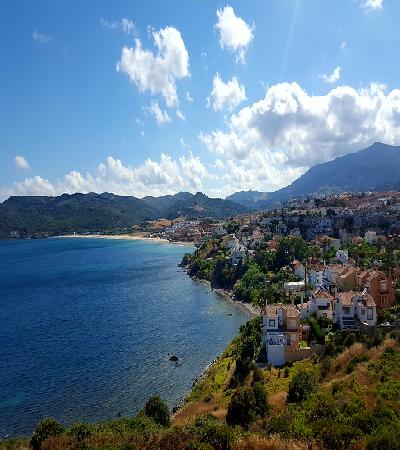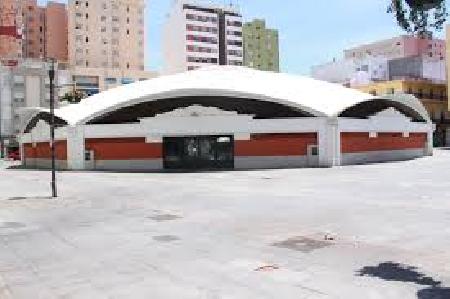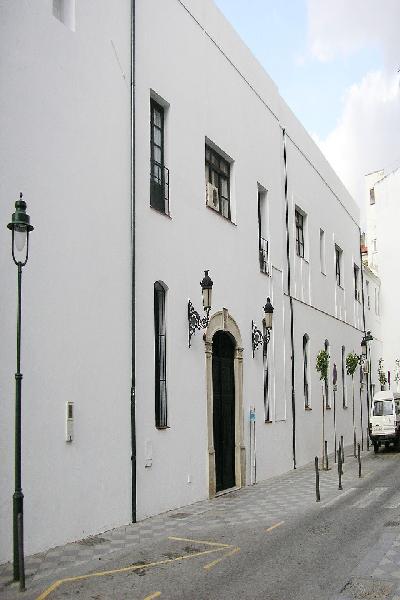 Located on the west coast of the bay of Algeciras, facing Gibraltar, Algeciras occupies sloping terrain backed by the Sierra de Luna mountains to the west. Algeciras is mainly a port and industrial center, which extends from the far side of the bay to Gibraltar.
Located on the west coast of the bay of Algeciras, facing Gibraltar, Algeciras occupies sloping terrain backed by the Sierra de Luna mountains to the west. Algeciras is mainly a port and industrial center, which extends from the far side of the bay to Gibraltar.
It is an industrial city that supports the large deep-water container port and the nearby oil refinery. There are many Moroccans in transit in the port area, particularly during July and August, when migrant workers return home to spend the holidays after work in France, the Netherlands and Belgium. Accordingly, there is a strong Arab influence here with many of the signs in Arabic and Spanish, while in the alleys you can find several traditional tea shops that specialize in traditional Moroccan mint tea.
The port is the main starting point not only for cargo but also for ferries to North Africa, the Canary Islands and Barcelona. It developed rapidly after the Bobadilla railway was completed in 1890, becoming an important transportation hub for the region.
Algeciras may not be a beautiful city but it has great individuality and, unlike some of the Costa's tourist centers, it is a very genuine place with a true port atmosphere. There are many reasonably priced restaurants to try - several with incredible views of the nearby Rock of Gibraltar.
Algeciras Market:
 The market of the city of Algeciras is located in the Plaza Nuestra Señora de la Palma. This concrete and steel structure was designed by the Spanish engineer Eduardo Torroja in 1933. Its originality lies in its roof, which only rests on four points, which at the time was a great feat of engineering.
The market of the city of Algeciras is located in the Plaza Nuestra Señora de la Palma. This concrete and steel structure was designed by the Spanish engineer Eduardo Torroja in 1933. Its originality lies in its roof, which only rests on four points, which at the time was a great feat of engineering.
Plaza Alta:
This square is the emblematic heart of the city. Note the neo-Mudejar fountain from the 1930s, made of brick and tiles and surrounded by palm trees. In this square there is also the Church of Our Lady of La Palma, a baroque and neoclassical church from the 18th century, as well as the small baroque church of Our Lady of Europe.
María Cristina Park:
The María Cristina Park is a park in Algeciras, in the southeast of Spain. It is one of the oldest parks in the city, which was established since 1834. It has an area of 20,683 m²
Marine baths:
It limits with Ramón y Cajal Street to the north, Capitán Ontañón Street to the east, Blas Infante Avenue to the south and Armed Forces Avenue to the east.
In 1999, the city council moved to the last remains of these baths from 13C to the María Cristina Park. In their day they were part of the residence of the Mérinides, property of a Moroccan dynasty that reigned in Algeciras for several years. A ferris wheel and a well have been rebuilt and their function is explained.
Municipal Museum of Algeciras:
 Numerous pieces from the Roman period, such as amphorae and corks, are exhibited in this museum, which testify to the commercial importance of the waters surrounding the bay of Algeciras. It is also worth noting the exhibitions related to the siege of Algeciras (1342-44), during which Alfonso XI's troops used ingenious techniques of warfare.
Numerous pieces from the Roman period, such as amphorae and corks, are exhibited in this museum, which testify to the commercial importance of the waters surrounding the bay of Algeciras. It is also worth noting the exhibitions related to the siege of Algeciras (1342-44), during which Alfonso XI's troops used ingenious techniques of warfare.
Getares Beach:
This Algeciras beach is surrounded by mountains full of a large amount of vegetation, and gets to take its name from the urbanization in which it is located, as well as having several ideal amenities to enjoy a day at the beach.
